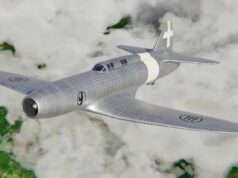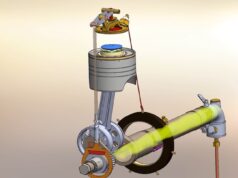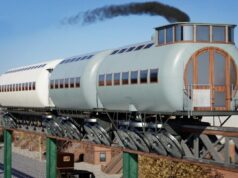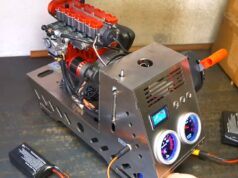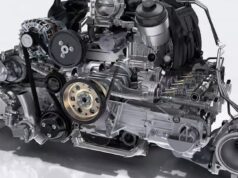A typewriter is a mechanical or electromechanical machine for typing characters. Typically, a typewriter has an array of keys, and each one causes a different single character to be produced on paper by striking an inked ribbon selectively against the paper with a type element.
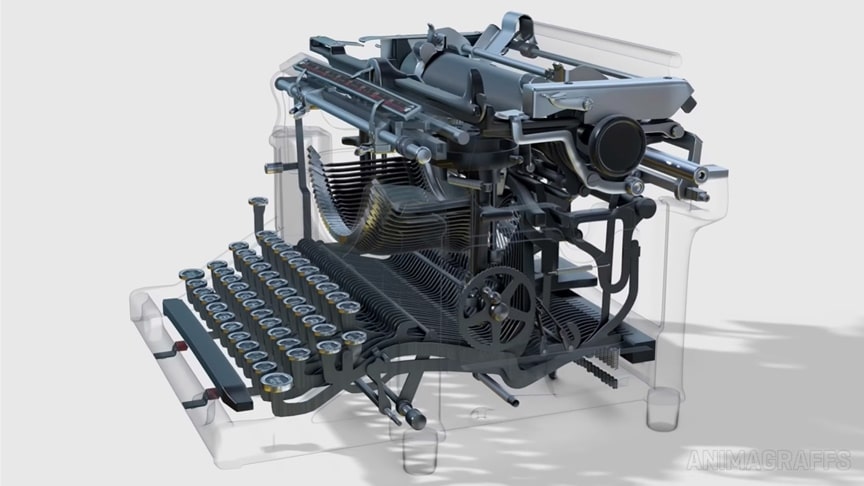
For a mechanical typewriter, each key is one end of a lever. Depressing the key raises the other end of the lever, and this in turn causes the letter to be pressed against a ribbon containing ink, and the letter and ribbon together being pressed against a piece of paper. Featuring more metal parts than a Terminator robot, but using exactly zero electricity, this mechanical typewriter is a wonder from recent history! Watch the video from Animagraffs:
The letter is a metal surface with the shape of the letter raised about 0,5 of a millimeter above the surface. This is enough to make sure that ink is only transferred to the paper where the letter shape touches the ribbon.
Advertisement
The “Underwood 1 typewriter, 10″ Pica, No.990”. This was the first typewriter with a typing area fully visible to the typist until a key is struck. These features, copied by all subsequent typewriters, allowed the typist to see and if necessary correct the typing as it proceeded. The mechanism was developed in the US by Franz X. Wagner from about 1892 and taken up, in 1895, by John T. Underwood (1857–1937), a producer of office supplies.

